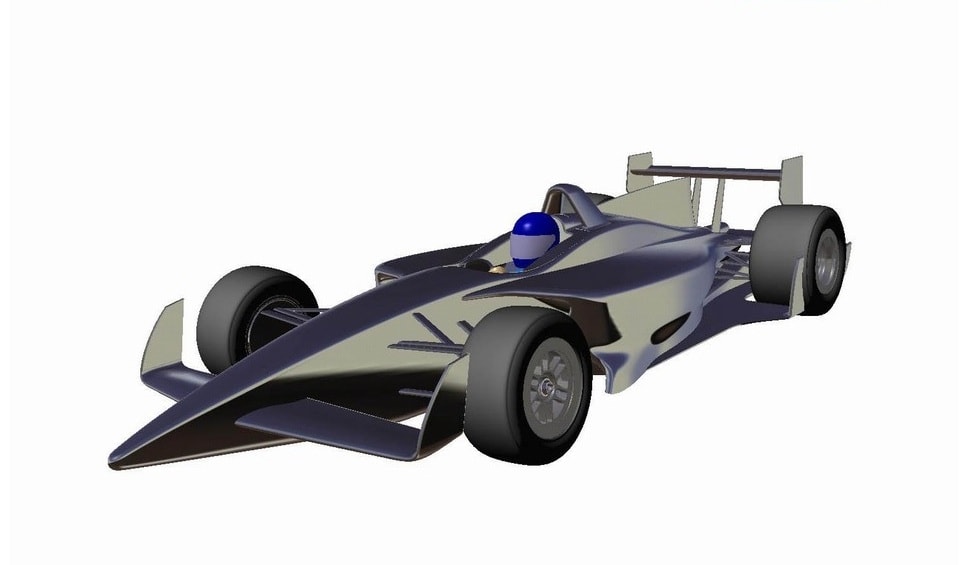Lola has revealed their new pictures and specifications of the concept chassis they have submitted to the IndyCar Series for the 2012 season. After Dallara, Swift and DeltaWing, the Italian manufacturer has now showed the world how they think the next IndyCars should look like from 2012 onwards.
With the North American series already announcing its plans to switch to a newly-developed chassis starting 2 years from now, several manufacturers have issued more or less dramatic designs of the future cars. Not Lola though, as the former ChampCar chassis designer presented a lighter concept, yet prone to some spectacular racing, as stated in an official press release.
“Delivering advanced technology and capturing the legendary IndyCar spirit with practical affordability, Lola USA today announce additional detail and present the first images of the proposed Lola B12/00 and B12/01 IndyCars for the 2012 IZOD IndyCar Series,” said the statement.
“The ‘total solution’ package will deliver two attractive and aero performance balanced racecars that will deliver a return to close and gladiatorial racing. Safety, efficiency, styling and affordability have been at the forefront of the Lola special projects team that have been working on this project throughout 2009 to date.”
“Central to Lola’s extensive aerodynamic research has been the necessity to guarantee close and exciting racing. Wheel to wheel duels on the variety of circuits that the IZOD Indycar Series races on will become the norm rather than the exception.”
“Focusing on the rear under-body of the Lola Indycar, designers have found a cost effective and simple breakthrough to ensure that there is a minimum wake for following car. This means that drafting and slipstreaming will be in the drivers own hands rather than that of the aerodynamics itself,” further explained the Lola statement the cars' aerodynamic performances.
“Lola USA has pinpointed specific areas using CFD methods to ensure a high yaw angle stability is maintained on the car. Less variation to total aero load on the rear wing will be optimised with pitch angle changes. Enhanced rear crash structures, a long front nosebox and increased head protection have also been a focus.”
With the North American series already announcing its plans to switch to a newly-developed chassis starting 2 years from now, several manufacturers have issued more or less dramatic designs of the future cars. Not Lola though, as the former ChampCar chassis designer presented a lighter concept, yet prone to some spectacular racing, as stated in an official press release.
“Delivering advanced technology and capturing the legendary IndyCar spirit with practical affordability, Lola USA today announce additional detail and present the first images of the proposed Lola B12/00 and B12/01 IndyCars for the 2012 IZOD IndyCar Series,” said the statement.
“The ‘total solution’ package will deliver two attractive and aero performance balanced racecars that will deliver a return to close and gladiatorial racing. Safety, efficiency, styling and affordability have been at the forefront of the Lola special projects team that have been working on this project throughout 2009 to date.”
“Central to Lola’s extensive aerodynamic research has been the necessity to guarantee close and exciting racing. Wheel to wheel duels on the variety of circuits that the IZOD Indycar Series races on will become the norm rather than the exception.”
“Focusing on the rear under-body of the Lola Indycar, designers have found a cost effective and simple breakthrough to ensure that there is a minimum wake for following car. This means that drafting and slipstreaming will be in the drivers own hands rather than that of the aerodynamics itself,” further explained the Lola statement the cars' aerodynamic performances.
“Lola USA has pinpointed specific areas using CFD methods to ensure a high yaw angle stability is maintained on the car. Less variation to total aero load on the rear wing will be optimised with pitch angle changes. Enhanced rear crash structures, a long front nosebox and increased head protection have also been a focus.”
